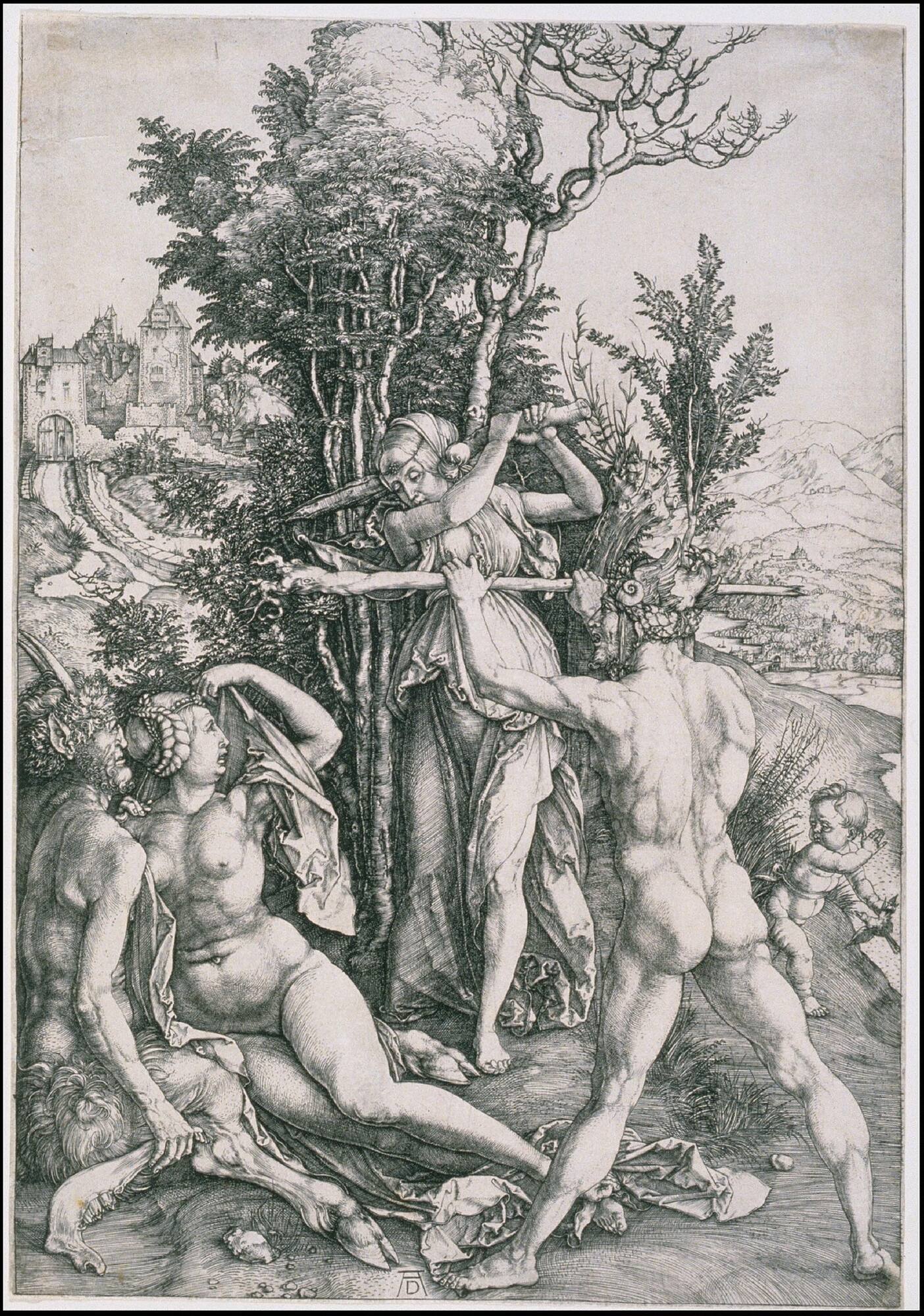Albrecht Dürer
(German, 1471–1528)
Combat of Virtue and Pleasure in the Presence of Hercules, or Hercules at the Crossroads

Object Details
Artist
Albrecht Dürer
Date
ca. 1498–99
Medium
Engraving on laid paper
Dimensions
12 3/4 x 8 13/16 inches (32.4 x 22.4 cm)
Credit Line
Acquired through the Museum Membership Fund
Object
Number
64.0063
Albrecht Dürer traveled to Italy in the early 1490s, where he was inspired to create narrative engr(…)
Albrecht Dürer traveled to Italy in the early 1490s, where he was inspired to create narrative engravings populated with poses and physiques based on Greco-Roman sculpture. Here, Dürer’s Hercules at the Crossroads promulgates the beauty of the classical nude through cribbing the forms of a Venus sculpture, seen at lower left, and a heroic male nude, perhaps an Apollo, and using them in service to illustrate the story of Hercules quashing a brawl between a clothed personification of Virtue and a nude personification of Vice consorting with a satyr. Dürer’s print was both widely collected and copied through artists like Gabriel Salmon, whose interpretation of Hercules at the Crossroads can be seen at right. Though both defy anatomical accuracy by overemphasizing musculature and twisting limbs past their points of “natural” extension, Dürer’s animation of marble Venuses and Apollos, and Salmon’s promulgation of the subject, helped in part to form the visual language on which anatomists could base their anatomical models. Furthermore, Dürer’s Four Books on Human Proportion, which codified corporeal perfection based on measurements, helped artists adhere to a certain body type when illustrating their discoveries. Thus, the anatomical illustrations seen in this gallery are indebted to Dürer and his classically minded compatriots, and explore the extent to which the Greco-Roman model can be animated, dissected, and recontextualized in the name of scientific inquiry.
(“Undressed: The Nude in Context, 1500-1750,” co-curated by Andrew C. Weislogel and Brittany R. R. Rubin and presented at the Johnson Museum February 9-June 16, 2019)
—
Hercules at the Crossroads is one of Dürer’s most humanistically complex prints, long debated by scholars. Most agree it is based on the story from Xenophon of the young Hercules making a choice between virtue (shown here as the upright, clothed woman) and vice (the woman reclining in the satyr’s lap). The inclusion of cities seems to underscore Hercules’s options, by offering roads leading to a strong and upright citadel at left, and a splayed out, rather luxurious river town at lower right.
(Andrew C. Weislogel, “Mirror of the City: The Printed View in Italy and Beyond, 1450–1940,” catalogue accompanying an exhibition organized by the Herbert F. Johnson Museum of Art, curated by Andrew C. Weislogel and Stuart M. Blumin, and presented at the Johnson Museum August 11–December 23, 2012)












